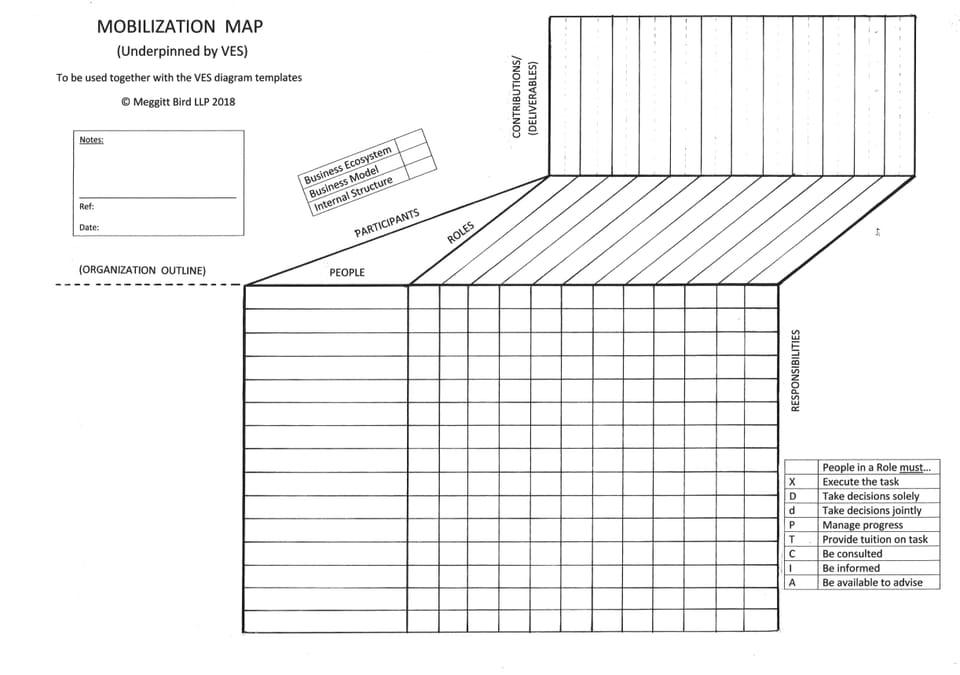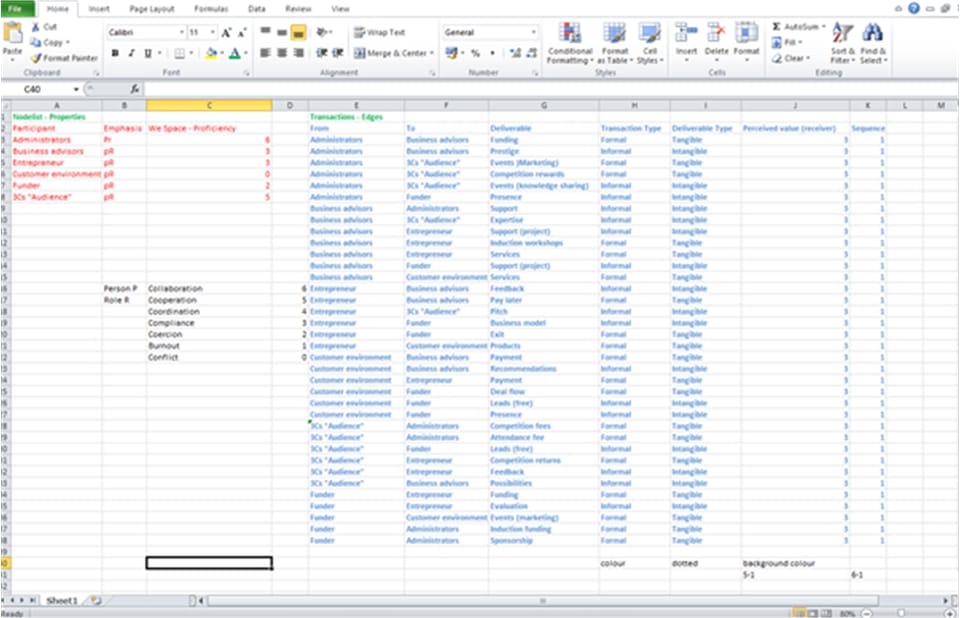Outline of VES drawing Methods (H1)

Examples in D2 show how VES can be presented as diagrams for particular situations. This follows the wisdom that a picture or diagram is worth a thousand words. Consequently, by directly drawing them, this is the recommended way in which to start with VES and engender engagement.
Alternative approaches use words in different formats which can then be converted, either manually or automatically into a diagram.
Methods
Directly drawn diagrams
The format used in VES (refer to W2) is not unique. Similar examples can be found in “101 Design Methods” by Vijay Kumar: viz:-
- Descriptive value web
- Activity network
- Role play ideation
- Prescriptive value web
- Solution diagramming
Usefully, VES incorporates the applications that the above relate to, although the methods used to create them are broadly similar.
VES diagrams can be created from scratch or adapted from ready-made templates. To help the brain assimilate the diagrams, it is advisable to limit the number of Participants in any one diagram to about seven.
Text-based representations
VES can also be represented by adding its components to a spreadsheet. Additionally, the contents can subsequently be converted into a diagram by using free software.
A further, unique development is the Mobilization Map. This combines (Participant) People and Roles, Deliverables, and a Responsibility Matrix.
Analyses
1) Detailed analysis. With VES, you can analyze individual transactions from many perspectives including value, risk, and criticality. A key purpose of these analyses is to assess the contributions of deliverables in value transactions to the costs, risks, or gains to a Participant’s assets. This is particularly helpful at the operational level when the focus is on "doing things right." A summary of these types of analysis, their purpose, and their effect on assets is provided in Table 9.1 in the VES Handbook.
2) Overview analysis. It is also vital to check that one is "doing the right things." Two tests have been selected for this purpose, viz:
a) Viability, using the five roles specified in the Viability Systems Model approach b) Innovation risk assessment [1]
I’ll cover how to use the above methods in further HOW? issues.
Acknowledgement
Experience has historically been gained from earlier collaborations with Verna Allee and Dr. Oliver Schwabe in their work on value networks. Refer WHO?
Although derived from a different foundation, VES does incorporate basic insights from this collaboration.
[1] R. Adner, The Wide Lens - a new strategy for innovation, London: Portfolio Penguin, 2012.



